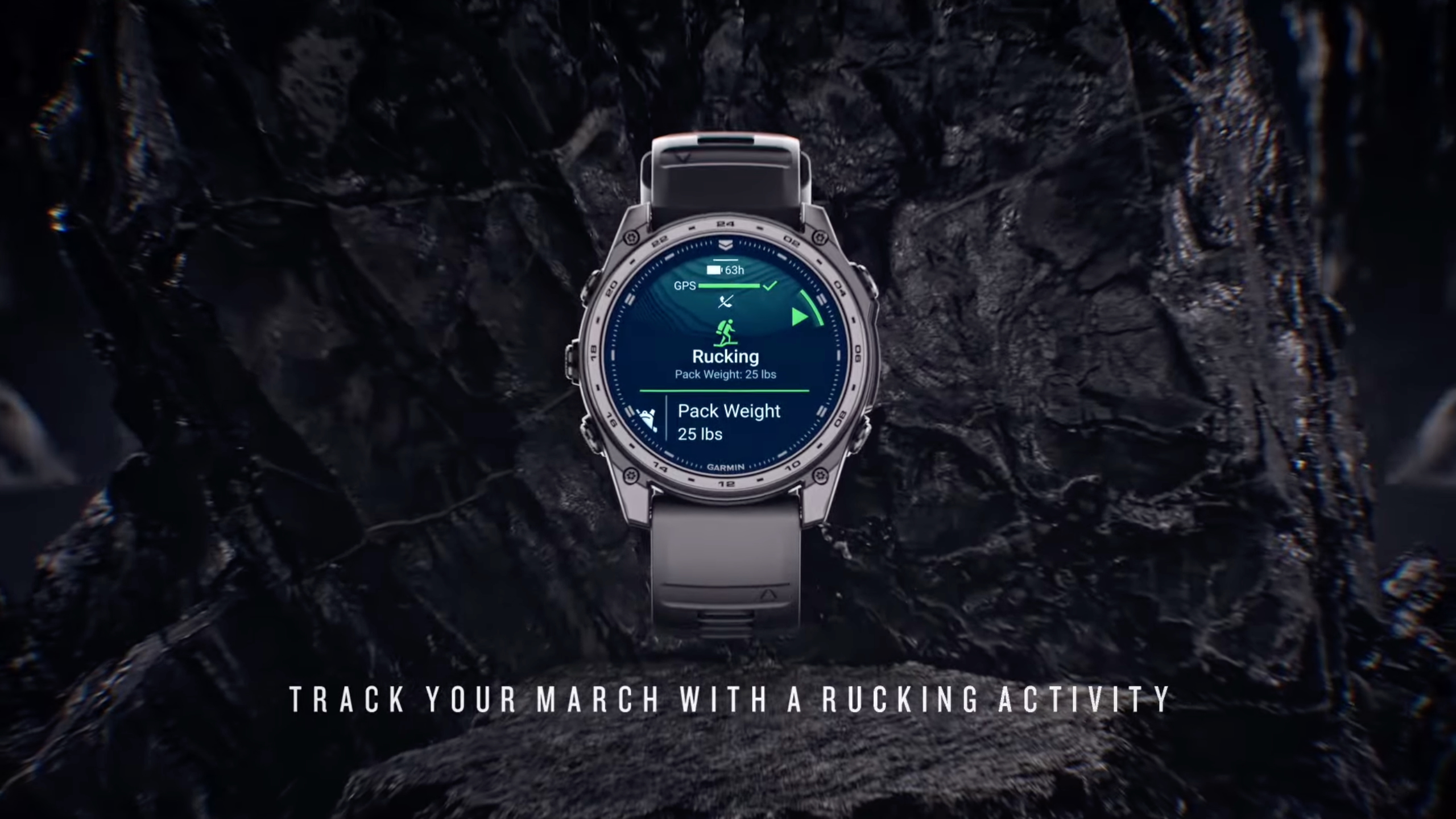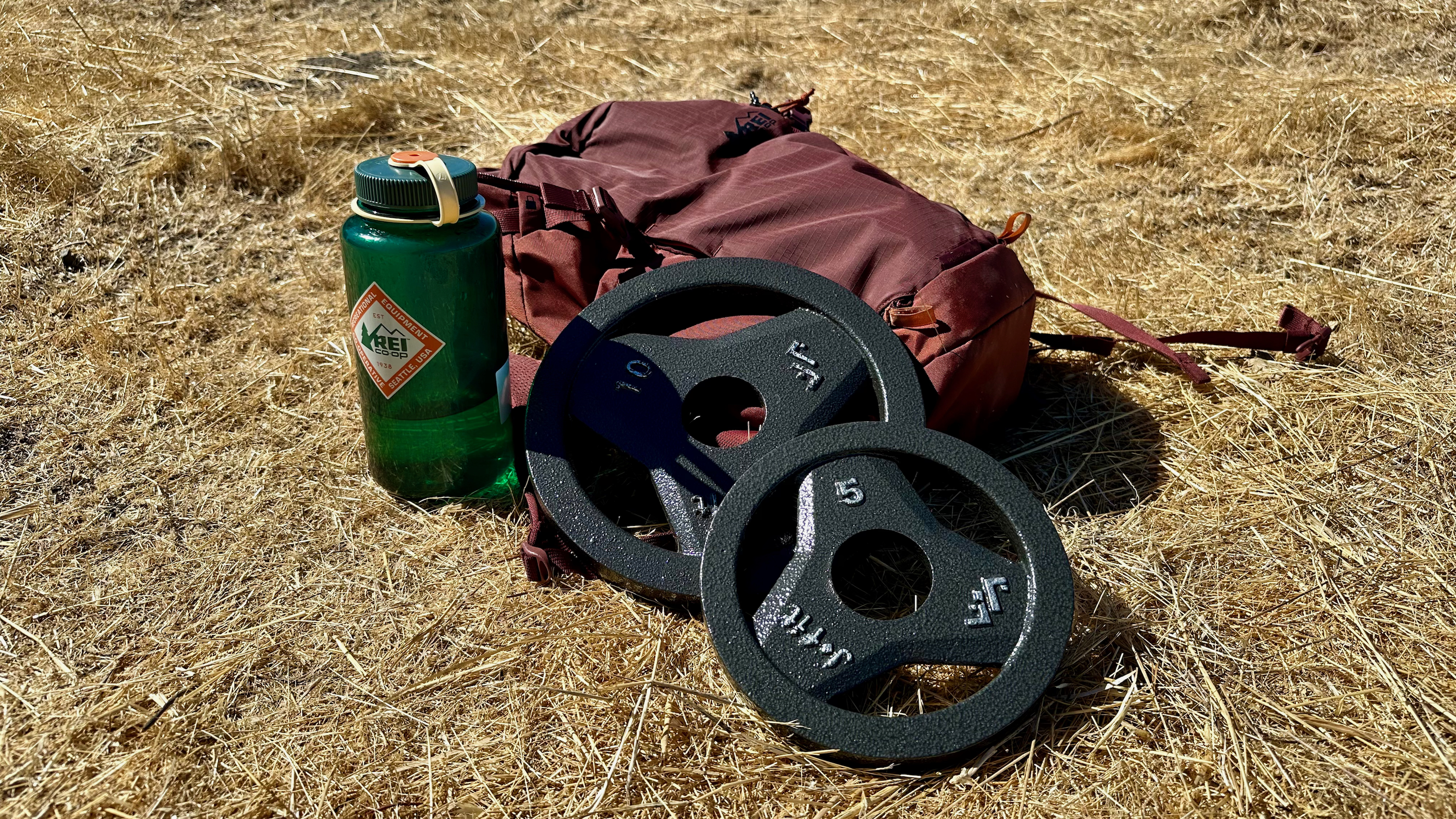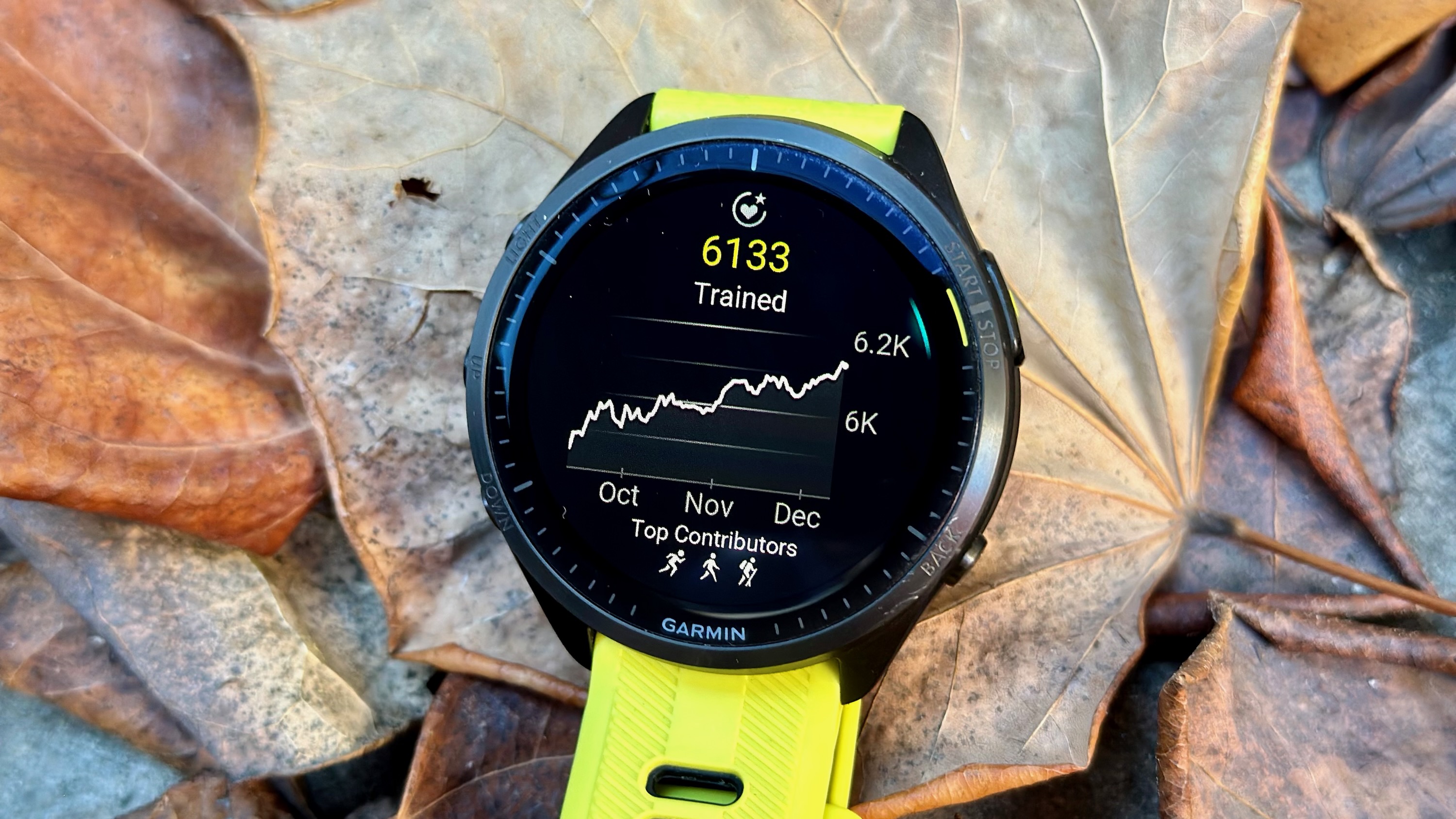Garmin added the rucking tool I'd craved, but I already want more
Rucking is coming to the Garmin Tactix 8 — and undoubtedly to other Garmin watches — but Garmin could take this data even further.

Garmin unveiled its new Tactix 8 watch last Thursday, designed specifically for military and reserve service members. One new, long-awaited feature is a "rucking" mode that lets you "input pack weight to better understand the physical exertion associated with rucking." And I'm already thinking about how Garmin can upgrade this feature.
Despite its origins in military training, rucking has grown as a civilian workout fad in recent years — carrying extra weight on hikes to build muscle and elevate your heart rate for extra training load — and I fully expect this mode to come to other Garmin watches in 2025 once the Tactix 8 gets its exclusivity window.
Whether or not you use the "Rucking" sport profile, Garmin has added a "pack weight feature" that lets you input how much weight you're carrying for other popular activities like trail running, hiking, and walking. Garmin says that any activity carrying 2kg or more will be disabled for VO2 Max recording.
While that might sound disappointing at first glance, this is a much-needed adjustment. Depending on your pack weight, your heart rate will climb into higher HR zones, especially on hills. With no context, my Garmin watch would assume I'm in in worse shape than its algorithm originally suggested, and lower my VO2 Max.
I feared that rucking or adding pack weight wouldn't give me any training load because of this. Thankfully, a Garmin rep told me that, while "there is no direct adjustment to training load" when weight is added, "load would indirectly be affected by carrying weight due to HR inevitably being higher."
In other words, Garmin's Training Status and Training Readiness would still take a difficult workout into account, judging you to be overtraining if a hard rucking workout overtaxed your heart long enough to need rest. And you'll still get training load credit. You'll just have to wait for your next non-weighted activity to try and raise your VO2 Max.

I'm eagerly anticipating this feature coming to watches like the Garmin Fenix 8, and hope the company won't restrict such an essential tool from the mid-range or lower-end models like the Garmin Instinct 3 or Forerunner 165. Garmin said they "cannot comment on a potential future roadmap" for this feature or others, but its watches usually get updated every quarter.
Be an expert in 5 minutes
Get the latest news from Android Central, your trusted companion in the world of Android
I know what you're thinking: If I'm excited about this and think Garmin went about adding rucking and pack weight the right way, what's the "upgrade" I'm already demanding from Garmin?
Garmin users will know of two recent metrics added to high-end models like the Forerunner 965: Endurance Score and Hill Score. They both translate more generalized metrics like TL and VO2 Max into practical measurements of how your theoretical fitness level translates into real-world ability. The more you can sustain your pace for long paces or sprint up hills without a break, the higher your score.
My suggestion sounds simple, but might be challenging to pull off. I want a Pack Score, or a Grit Score, or maybe even a Muscle Score? I don't know what Garmin would call it; I simply know that it'd be awesome for Garmin to measure your muscular and cardiovascular ability to bear certain weights over time.

Garmin knows (via your VO2 Max and Hill/Endurance Scores) what your heart rate should be at any given pace, distance, or elevation gain. So if you start an activity with 10 pounds of weight, it should be able to compare your rucking HR against your normal HR and judge how well your body is bearing the weight.
I'd imagine that to get a Garmin rucking score, your watch would need you to bear a certain threshold of weight for a long enough stretch for it to determine your abilities. For future activities, bearing more weight might boost your score, but only if the weight doesn't push your HR too far from your VO2 Max baseline.
Over time, your Garmin rucking score would improve by three metrics: increasing your VO2 Max to handle the cardiovascular workload, decreasing the gap between your baseline HR and your weight-bearing HR, and increasing your max pack weight.
With enough data, Garmin's algorithm could determine your body's recommended pack weight range, with suggested activity lengths or Garmin Strength Coach workouts that could target the weight-bearing muscles necessary to improve.
Rucking enthusiasts don't necessarily need validation from a smartwatch; they know how much weight they can bear. But for anyone new to the sport, a Garmin rucking score that judges your abilities and warns you away from pushing too hard until you're ready could be extremely useful!
Garmin says "there is currently no additional tracking regarding judging your ability to adapt to heavier weights," and I can't predict if Garmin has any plans in this area; perhaps rucking is too niche for them to put in that much effort on a new algorithm. For now, I'll focus on my more immediate hope: that more Garmin watches get this cool new rucking activity!

Michael is Android Central's resident expert on wearables and fitness. Before joining Android Central, he freelanced for years at Techradar, Wareable, Windows Central, and Digital Trends. Channeling his love of running, he established himself as an expert on fitness watches, testing and reviewing models from Garmin, Fitbit, Samsung, Apple, COROS, Polar, Amazfit, Suunto, and more.
You must confirm your public display name before commenting
Please logout and then login again, you will then be prompted to enter your display name.
